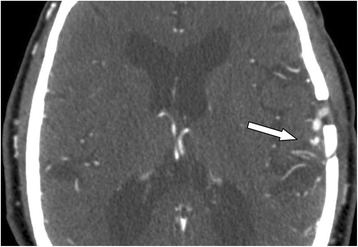Inducible limb-shaking transitory ischemic attacks: a video-documented case report and review of the literature
- PMID: 27215317
- PMCID: PMC4878005
- DOI: 10.1186/s12883-016-0601-8
Inducible limb-shaking transitory ischemic attacks: a video-documented case report and review of the literature
Abstract
Background: Limb-shaking transient ischemic attack (TIA) is a well-recognized, but rare observation in contralateral carotid steno-occlusive disease. Consequently, most clinicians have not had the chance to witness an attack.
Case presentation: We present the story of a 64-year old gentleman with exercise-induced weakness associated with tremor in his right arm. His left internal carotid artery was occluded at the bifurcation. Administration of statin and antiplatelet did not relieve his symptoms, and his stereotypic, exercise-induced "limb-shaking" episodes persisted. He underwent successful extracranial to intracranial (EC-IC) bypass, which stopped his symptoms. The patient, however, returned to our department and reported that he was able to recreate his original symptoms by compressing the bypass graft manually.
Conclusion: To our knowledge, this is the first case with video documentation of the clinical appearance of a limb-shaking TIA. We hope this case report will increase the physicians' understanding of the clinical nature of limb-shaking TIAs.
Keywords: Carotid occlusion; EC-IC bypass; Limb-shaking TIA; Stroke.
Figures




Similar articles
-
Bilateral asymmetrical asterixis as limb-shaking transient ischemic attack in bilateral carotid stenosis.J Stroke Cerebrovasc Dis. 2015 Jan;24(1):e29-30. doi: 10.1016/j.jstrokecerebrovasdis.2014.08.016. Epub 2014 Nov 8. J Stroke Cerebrovasc Dis. 2015. PMID: 25440334
-
[Limb-shaking--a rare manifestation of hemodynamic-related TIA].Lakartidningen. 2000 Sep 27;97(39):4313-6. Lakartidningen. 2000. PMID: 11076474 Swedish. No abstract available.
-
Physiological diagnosis and surgical treatment of recurrent limb shaking: case report.Neurosurgery. 1996 Sep;39(3):607-11. doi: 10.1097/00006123-199609000-00037. Neurosurgery. 1996. PMID: 8875496
-
Are limb-shaking transient ischemic attacks a risk factor for postendarterectomy hemorrhage? Case report and literature review.J Neuroimaging. 2008 Jan;18(1):96-100. doi: 10.1111/j.1552-6569.2007.00172.x. J Neuroimaging. 2008. PMID: 18190505 Review.
-
Limb-shaking Transient Ischemic Attacks: case report and review of literature.BMC Neurol. 2006 Jan 26;6:5. doi: 10.1186/1471-2377-6-5. BMC Neurol. 2006. PMID: 16438706 Free PMC article. Review.
Cited by
-
Limb shaking transient ischemic attack secondary to innominate artery stenosis.J Vasc Surg Cases Innov Tech. 2023 Aug 2;9(3):101277. doi: 10.1016/j.jvscit.2023.101277. eCollection 2023 Sep. J Vasc Surg Cases Innov Tech. 2023. PMID: 37674589 Free PMC article.
-
Movement Disorders Associated With Cerebral Artery Stenosis: A Nationwide Study.Front Neurol. 2022 Jul 14;13:939823. doi: 10.3389/fneur.2022.939823. eCollection 2022. Front Neurol. 2022. PMID: 35911886 Free PMC article.
-
Myoclonic Disorders.Brain Sci. 2017 Aug 14;7(8):103. doi: 10.3390/brainsci7080103. Brain Sci. 2017. PMID: 28805718 Free PMC article. Review.
References
Publication types
MeSH terms
LinkOut - more resources
Full Text Sources
Other Literature Sources
Medical

